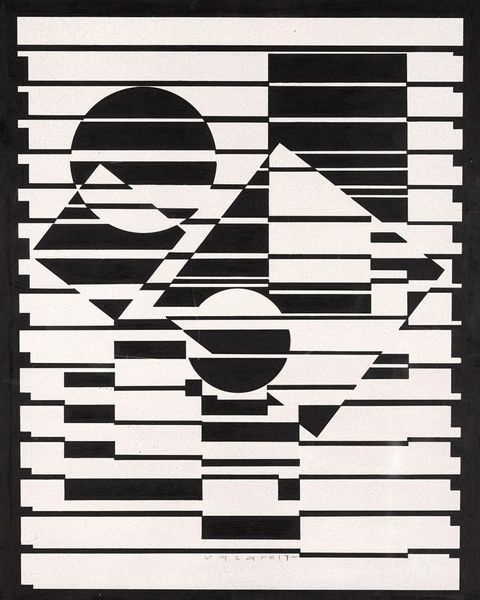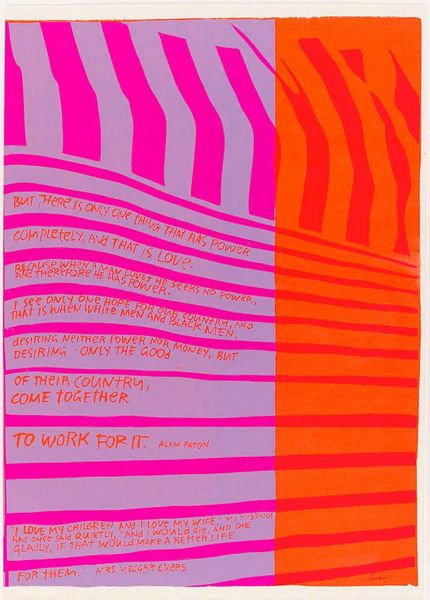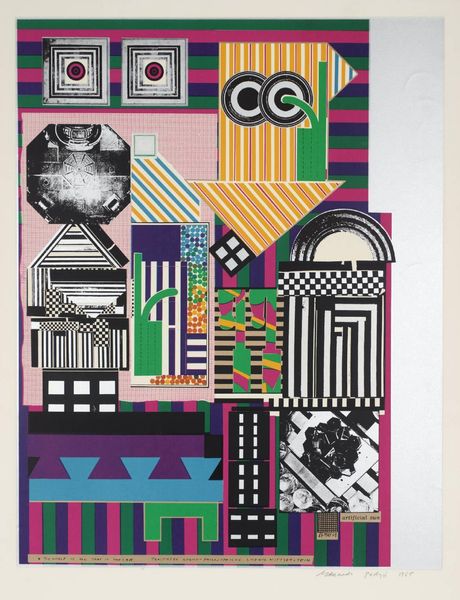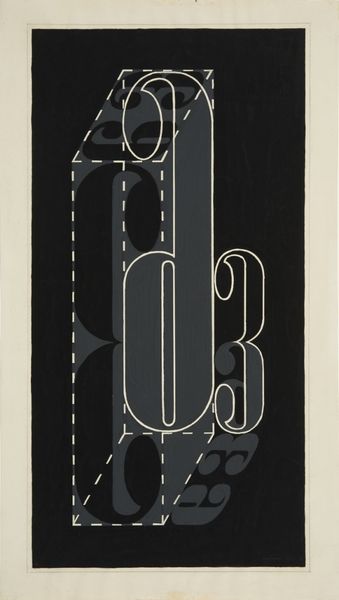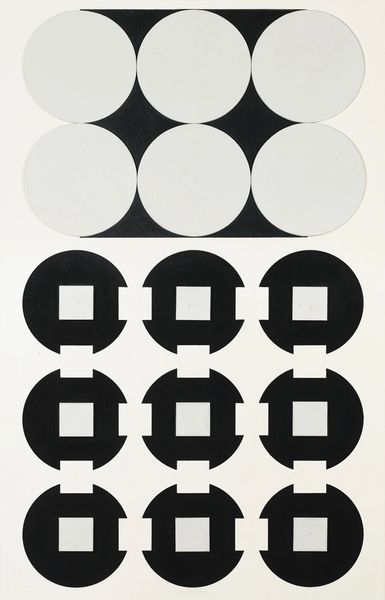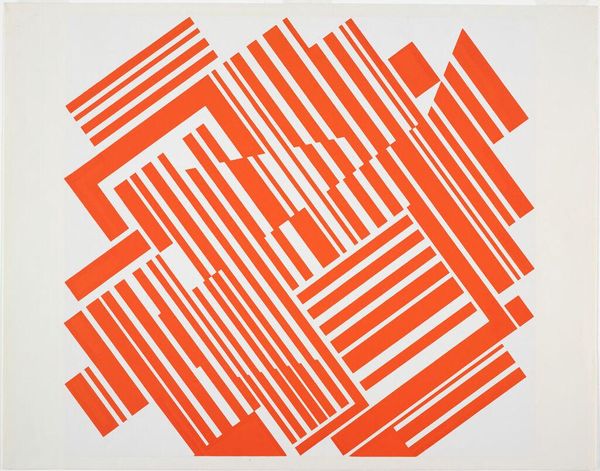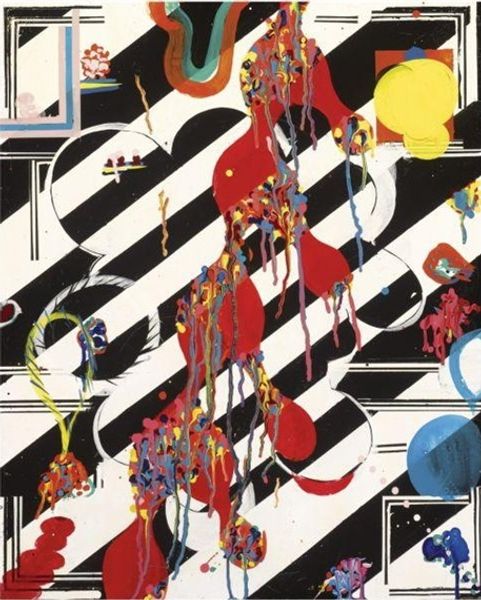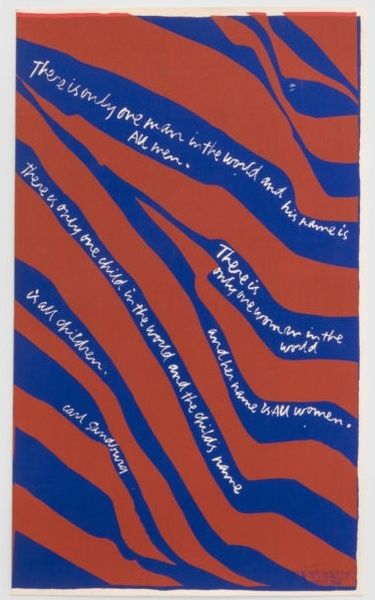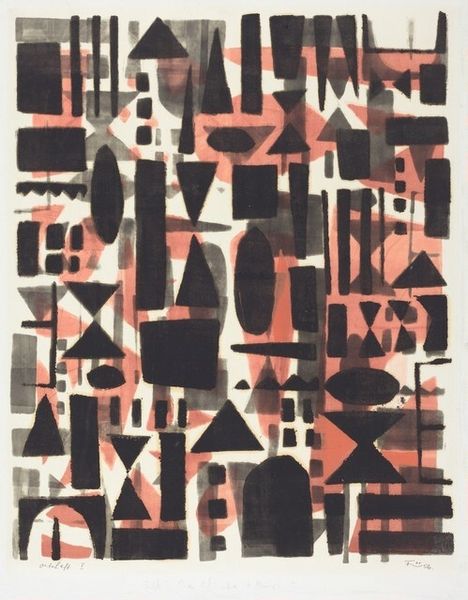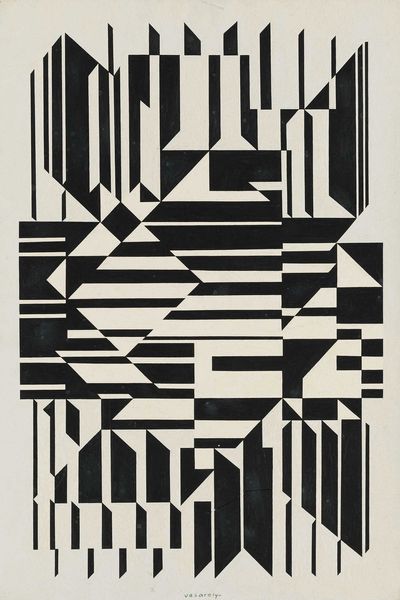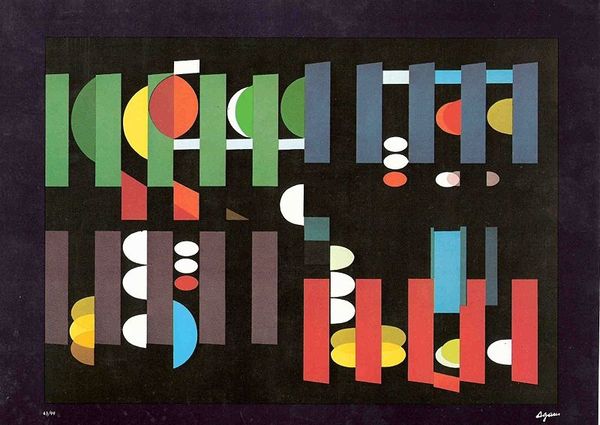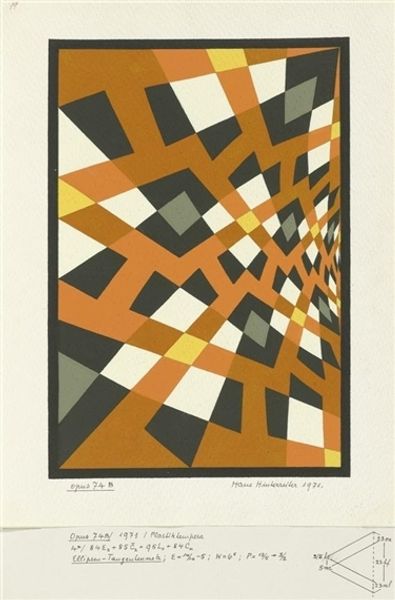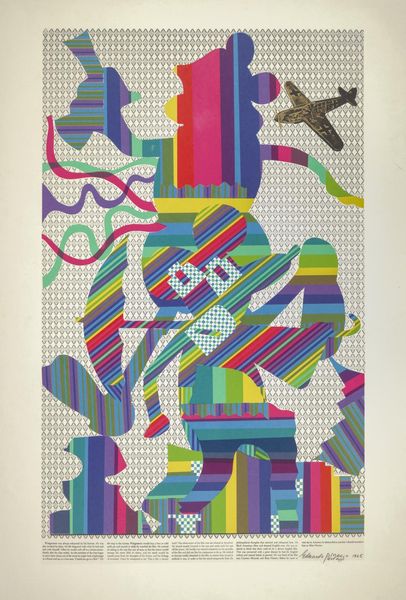
graphic-art, typography, poster
#
word art style
#
pattern out of typography
#
graphic-art
#
hand-lettering
#
bold typography
#
text art
#
typography
#
hand lettering
#
word art
#
typography
#
eye-catchy type
#
geometric
#
thick font
#
pop-art
#
line
#
poster
Copyright: Public Domain: Artvee
Curator: At first glance, the chromatic collision in the image, combined with linear forms and varied width and weight, brings to mind something akin to the audio waves resonating off of an organ performance. Editor: That’s an astute observation. The piece before us, a graphic-art poster created in 1970, advertises Catherine Crosier’s organ concert held at Kresge Auditorium in the Massachusetts Institute of Technology, USA. It appears to rely primarily on graphic and typographic methods. Curator: Yes, looking at the starkness of materials, I am compelled to think of how print production facilitated this design. I mean, what ink would be used for this effect? It also brings up questions around who would even be producing the work? It's function is really apparent, though—we can easily determine how someone, maybe a college student, engages with the message itself and the typography's form. Editor: And that’s an important consideration. Beyond simply conveying event information, it visually communicates the MIT's investment in high culture through design and invites community members in, or keeps outsiders on the fringe. It suggests who has access to institutions like MIT, who designs the publicity, and how the production and performance themselves form a cultural context for reception. Think about how the general public interacted with high-art in comparison to, for instance, design works. Curator: Thinking more on those terms, consider the distribution and intended lifespan. Was this made to be archived or trashed after the performance? These are very interesting notions to unpack because in many ways these production concerns and contexts are essential for truly understanding the message itself. It begs the question, when does material stop communicating beyond its formal qualities? Editor: I completely agree. Considering this graphic as a cultural artifact invites deeper engagement. So this visual does not just describe event details and instead prompts examination of the institutional forces and audiences circulating such art. Curator: Looking back, it underscores that art pieces often reach their full potential in conversation, extending beyond materials and entering our tangible lives through shared cultural ideas. Editor: Precisely, and interrogating graphic and institutional functions opens valuable spaces to examine and challenge these cultural dynamics as historical moments become embedded in memory.
Comments
No comments
Be the first to comment and join the conversation on the ultimate creative platform.

